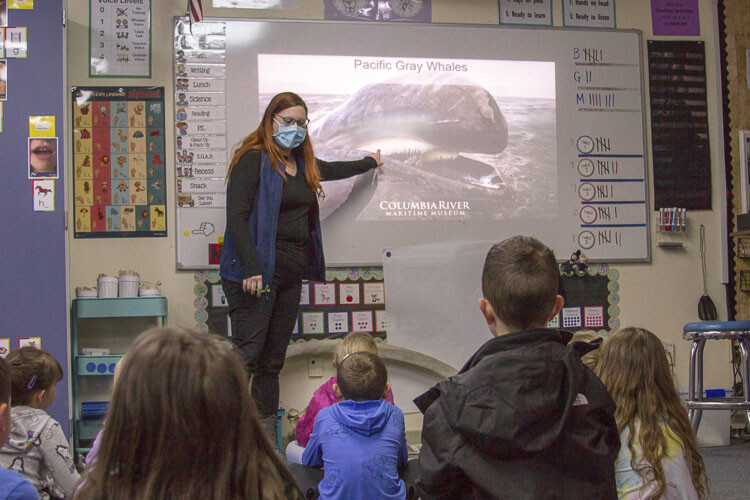
Field educator taught first graders about the differences between mammals and fish; the unique characteristics of the Pacific Gray Whale in comparison with other whales; and the similarities humans share with other mammals like whales
Elementary students in Woodland learned about Pacific Gray Whales, one of the species native to the Pacific Northwest, with in-classroom lessons, hands-on activities, and experiments taught by Field Educator Kelly McKenzie from the Columbia River Maritime Museum.
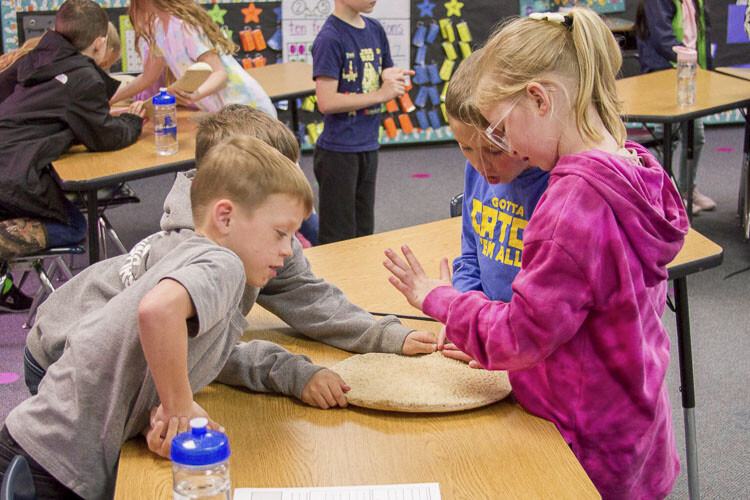
McKenzie taught first graders about the differences between mammals and fish; the unique characteristics of the Pacific Gray Whale in comparison with other whales; and the similarities humans share with other mammals like whales. After the lesson, students were to examine a variety of different whale bones including rib bones and vertebrae, as well as touch and feel a piece of baleen, the filter-feeding system some whales, like the Pacific Gray Whale, have in their mouths instead of teeth.

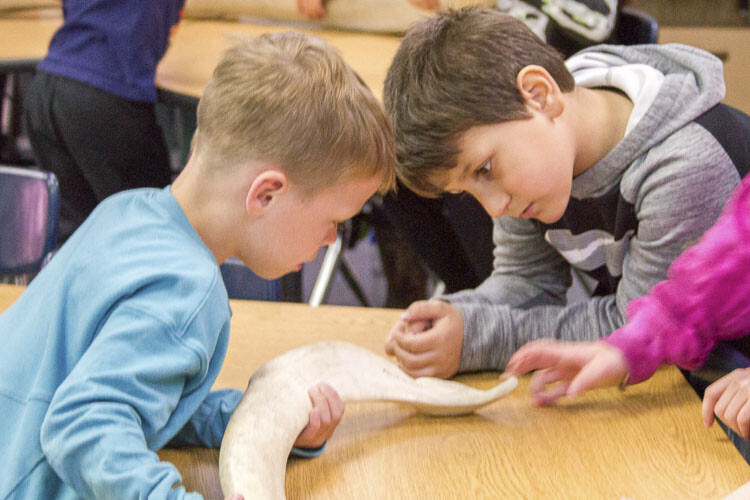
Pacific Gray Whales swim to the ocean bottom, suck in a huge amount of mud and water, and use their baleen to filter out small shrimp-like creatures called krill. “The average Pacific Gray Whale, which weighs between 60,000 to 80,000 and can be the size of a school bus, eats 2,500 krill each day,” explained McKenzie.
After examining bones and baleen in small groups, students engaged in an experiment to experience first-hand how a whale’s fat, called “blubber,” insulates the giant creatures against the extreme cold temperatures they experience in different parts of the oceans they inhabit. McKenzie had students put their bare arms in a cooler with ice water, roughly the same temperature as many of the oceans where whales live, for ten seconds. Then, students put their arms back into the water, but this time in bags filled with vegetable shortening which simulated how blubber keeps whales warm. Students were surprised by exactly how effective fat works as an insulator against cold.
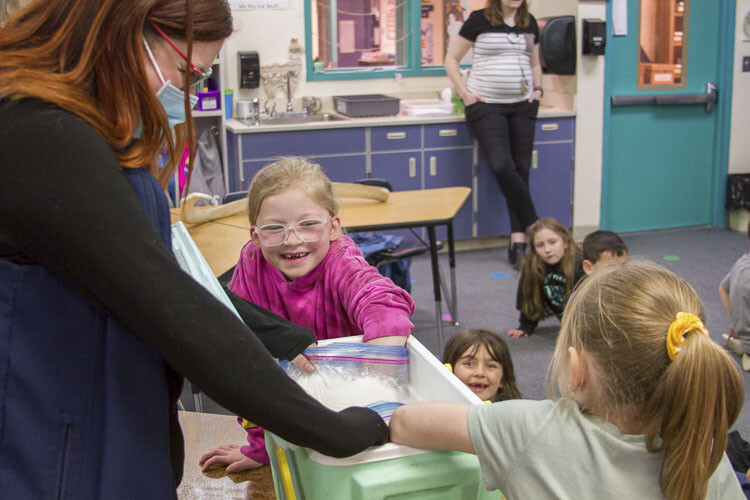
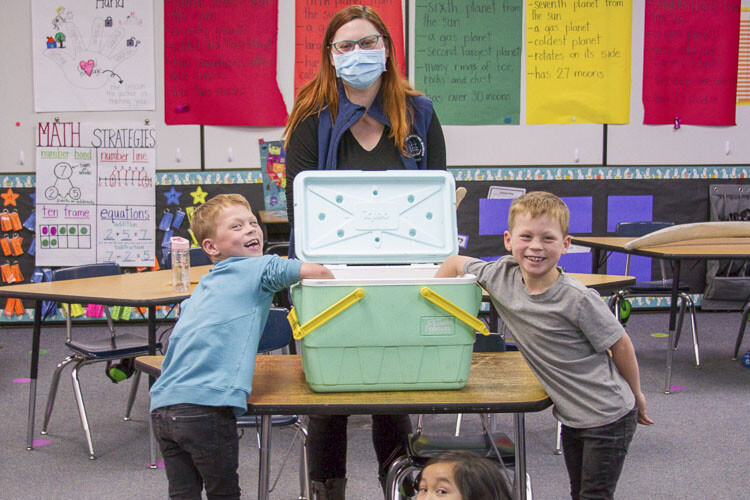
For McKenzie, education was somewhat of a family business as both of her parents were educators. “I spent my life in their classrooms, so it was natural for me to start a career in the same field,” she said. “For me, I love how every day is so different since I have to change my lessons depending on each grade level, and my favorite part is engaging and teaching students about important maritime topics.”
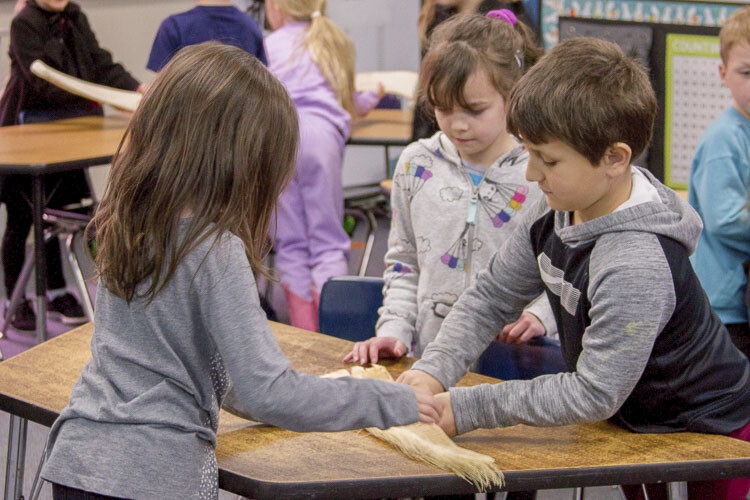
About the Museum in the Schools Program
The Columbia River Maritime Museum’s Museum in the Schools program offers several different presentations supporting Common Core and Next Generation Science Standards for students in grades K-5. The programs and materials are provided free-of-cost to elementary schools across Oregon and Washington. To learn more about the program, visit the museum’s website at www.crmm.org.
Learn more about how Woodland Public Schools educates students and serves the community, by visiting the dedicated news webpage at www.woodlandschools.org/news/wsd
Information provided by Woodland School District.




